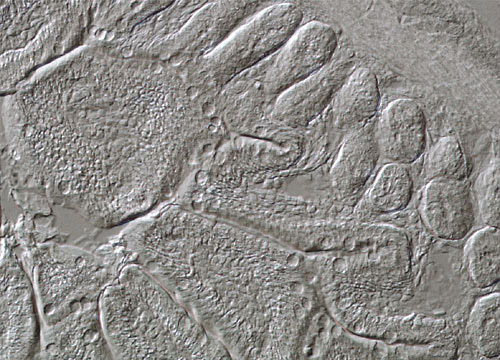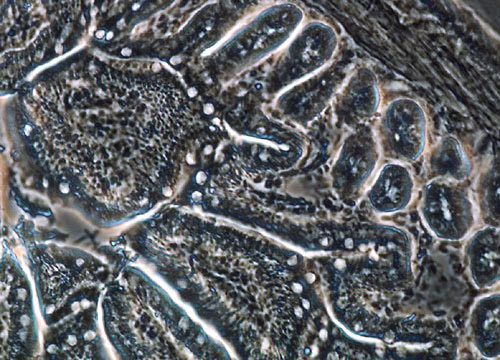Mouse Intestine
Mice are not a distinct species or group of animals. The term is commonly applied to small rat-like rodents in a number of families, but most species are members of Muridae. The intestines of mice are similar to those of most vertebrates, primarily absorbing water and electrolytes from digestive residues and storing fecal matter.
 DIC
DIC
 Phase
Phase
Phase
Due to their similarities to humans, mice are frequently used for scientific study and research. Laboratory mice are not collected from the wild, but are a special breed of house mice. The small creatures are much easier to handle and less expensive to rear than large mammals, which are generally not practical for laboratory use. Mice are also useful in study because their reproduction is rapid and prolific, allowing scientists to see prompt results of their actions.
DIC
Although science has found a noble purpose for the animals, most humans generally consider mice a nuisance. The rodents are extremely hearty and can exist almost anywhere if humans are also present to provide warmth and food. Perhaps not as objectionable as rats, mice are more common than their rodent comrades and cause a significantly greater amount of damage. Rodent infestations have been a long-term problem for homeowners, a fact demonstrated by the rat and mice bones that have been unearthed in the cave dwellings of prehistoric man.













